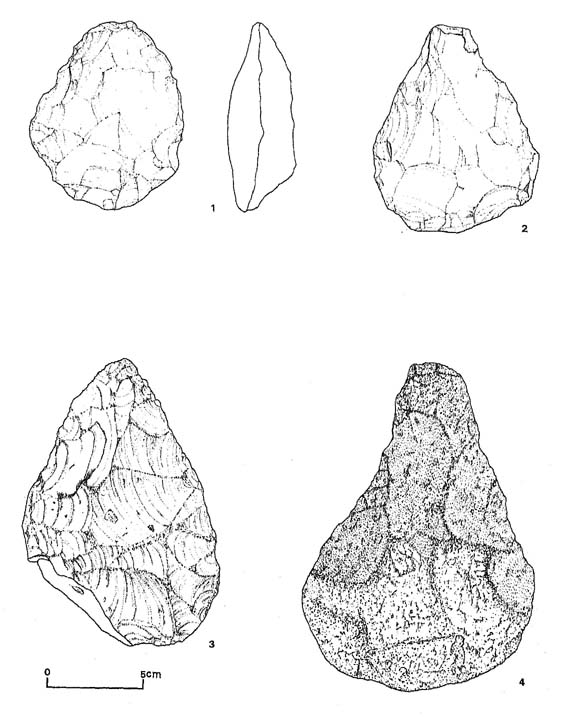CHAPTER III FLINT IMPLEMENTS COLLECTED
1. Lower Palaeolithic
|
Generally flints in Western Asia belonging to the Lower Palaeolithic are mostly discovered in river terrace or open-air sites. The Lower Palaeolithic industries so far discovered in cave deposits belong to the age later than the Tayacian (GARROD & BATE, 1937, NEUVILLE, 1951). Therefore, because the investigations of our team were mainly for the purpose of discovering cave sites, the discovery of flints corres ponding to the Lower Palaeolithic was only incidental, and very few in number. At Khellale (Site 97), two handaxes were discovered in situ, below the gravel surface of the river terrace of Nahr el Kebir (Fig. 38:2,3).
Specimens collected at Mseel (Site 22) have been rolled more strongly than those discovered at Khellale. They are composed of comparatively small handaxes flaked all over the face. They appear in a shape closer to an ovate type biface (Fie. 38:1,2). |
